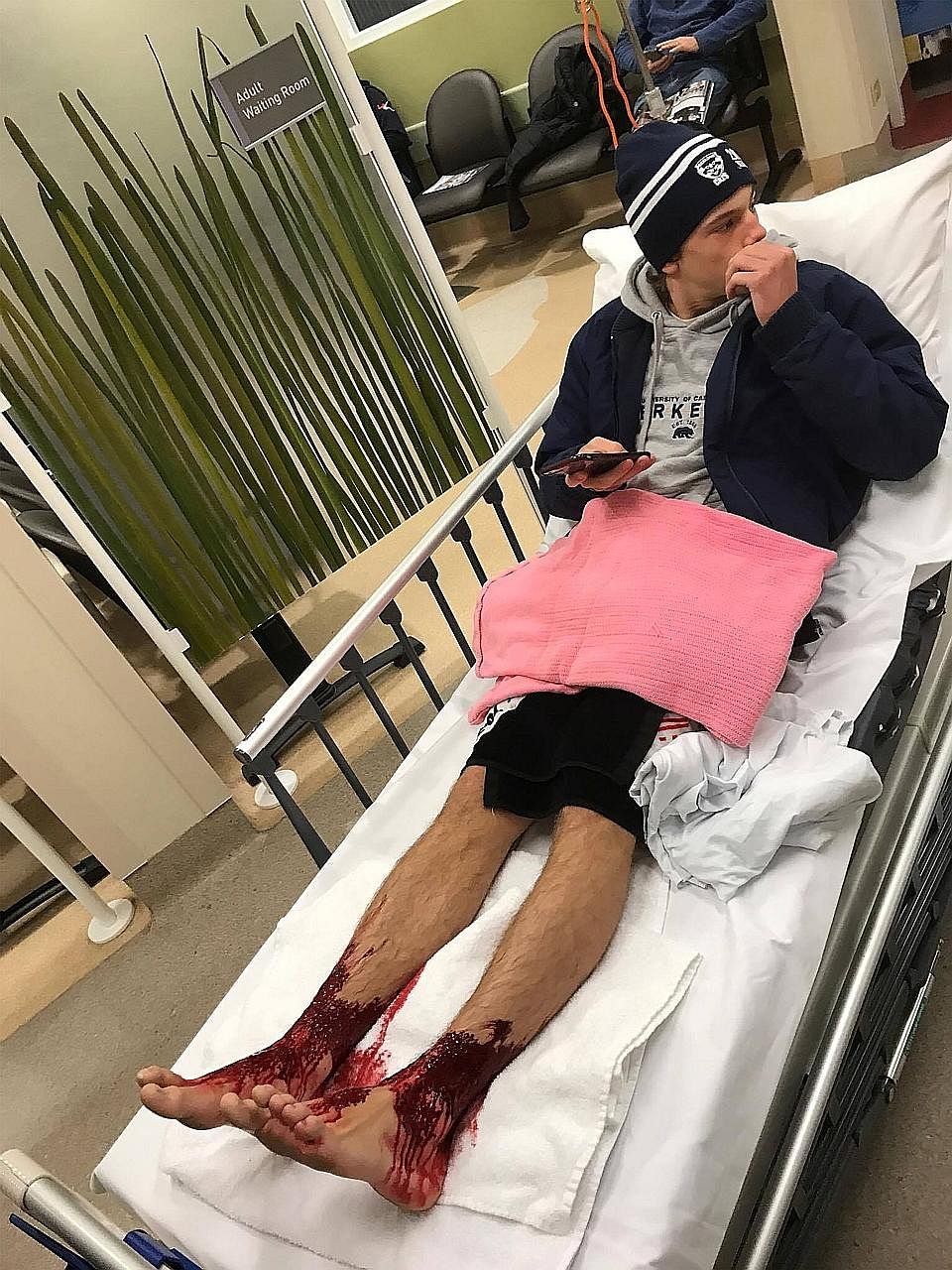SYDNEY • An Australian teenager emerged from a night-time dip in the ocean with blood streaming from his feet and ankles in a gruesome mystery that doctors have struggled to explain.
Sam Kanizay, 16, waded waist-deep into the water at Brighton Beach in suburban Melbourne last Saturday evening, hoping the cold salt water would relieve bruises on his legs after a vigorous football game that afternoon.
After 30 minutes, he emerged bleeding profusely from the calves down.
"The cold water numbed my legs. I felt what I thought was pins and needles," he told 3AW radio yesterday. Washing the blood off his legs in the shower did little to stem the flow from what his family believed was an attack by sea lice.
"It sort of looked like hundreds of little pin holes or pin-sized bites distributed all over my ankle and the top of my foot," he said.
Sam, who was rushed to hospital, said doctors could not explain what had caused the injury.
His father went as far as scooping some of the tiny critters from the ocean and posting a film online of them devouring chunks of meat.

Museums Victoria marine scientist Dr Genefor Walker-Smith has examined those specimens, and told Melbourne's Age newspaper yesterday the creatures were Lysianassid amphipods, a type of scavenging crustacean known as sea fleas, not sea lice as first thought. She told The Age it was possible that Sam disturbed a feeding group as they are generally not waiting to attack like piranhas.
Mr Jeff Weir, from Australia's Dolphin Research Institute, said the opportunistic amphipods usually latch onto decaying plant or animal matter to help break it down.
"They are not there to eat us, but sometimes they might take a little bit, like mosquitoes and leeches and other things out there in the environment," he said.
"He (Sam) must have been very, very cold and he wouldn't have felt it," added Mr Weir, who experienced a similar injury on his forehead after a night dive 40 years ago.
The veteran marine researcher said Sam's injury was much like a graze and he should not fear returning to the water.
AGENCE FRANCE-PRESSE
WHAT ARE SEA FLEAS?
Scientists identified the creatures that attacked Sam Kanizay as Lysianassid amphipods, a type of scavenging crustacean known as sea fleas. Measuring 0.5cm to 1cm, they are not venomous, are common in shallow water, and usually feed on dead or dying marine life.
There are hundreds of recognised species so small a microscope is required to recognise them.
A swarm could be attracted to a human due to a skin injury or because a human disturbs their feeding on a normal food source.
The Bayside City Council which covers the beach where the attack took place posted a quote on its website from marine biologist Dr Genefor Walker-Smith noting that amphipods are a valuable part of the marine environment.
"If we didn't have them, we would have a sea filled with dead and decaying fish," she said.

